Montessori’s child-led philosophy is not just for little kids – so say the staff of Stebbing Primary in Essex...
Child-led learning is nothing new – one of its greatest proponents, Maria Montessori, was formulating her pedagogy as far back as the late 19th century – but it has taken time for it to enter the mainstream. Even today, with child-led practice central to England’s Early Years Foundation Stage, and the days it was considered acceptable for primary-aged children to sit in neat rows and rote learn a thousand years of English monarchs long gone, the opportunities children have to take ownership of their education don’t necessarily abound.
The reality is that the extent to which child-led learning has taken root in the UK’s primaries differs widely. It has enjoyed a prominent position in a number of the ‘outstanding’ schools Teach Primary has visited over the last few months, but there are those which, for whatever reason, maintain a more traditional approach. And then, at the other end of the spectrum, you have schools like Stebbing Primary in Essex, whose commitment to independent learning has seen its staff wholeheartedly embrace Montessori’s child-led ethos and receive top marks from Ofsted’s inspectors for their efforts.
Stebbing, situated in a small village of the same name in rural Essex, is one of only a few Montessori primaries in the UK. Having made the decision to implement the approach school-wide back in 2006, it achieved its full Montessori Evaluation and Accreditation Board (MEAB) accreditation in December, 2010, becoming the first state primary to do so in the process. But far from a wholesale change, Montessori’s introduction at the school was, headteacher Karen Wallace explains, both a gradual process of experimentation and a reflection of Stebbing’s existing modus operandi: “The educational philosophy of the school hasn’t changed all that much since I arrived here 11 years ago,” she admits. “The three heads who have worked here in that time, including me, have all been very much of the same mind: that the children come first and that we want them to develop skills rather than knowledge. We want them to be independent, we want them to love learning; that’s the drive behind what we do.”
Headteacher at Stebbing for two years and counting, Karen arrived in the teaching profession via a circuitous route. Having worked as a management accountant for 15 years, and then volunteered as a teaching assistant at her daughter’s school when it was placed into special measures, she then moved to Stebbing and has been there for the whole of her professional teaching career. “I was brought up living in the village, and my mum used to teach at this school,” she explains. “I came here because a job happened to come up when I was an NQT, but I am quite personally involved too.
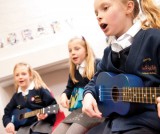 “I was deputy head when we introduced Montessori into KS1 and KS2,” she continues. “We were very sceptical to start off with. We’d already taken it into the early years because we have a Montessori nursery on site, but over time we’d found that teachers were popping over to the nursery to borrow pieces of equipment they thought would work well with their pupils. We also had a lot of visitors coming in to see the school and the nursery who would draw parallels between our approach to teaching and the Montessori method anyway; we already pushed for the children to be independent and make their own choices, to be responsible for their own learning – all those things that are key to Montessori.
“I was deputy head when we introduced Montessori into KS1 and KS2,” she continues. “We were very sceptical to start off with. We’d already taken it into the early years because we have a Montessori nursery on site, but over time we’d found that teachers were popping over to the nursery to borrow pieces of equipment they thought would work well with their pupils. We also had a lot of visitors coming in to see the school and the nursery who would draw parallels between our approach to teaching and the Montessori method anyway; we already pushed for the children to be independent and make their own choices, to be responsible for their own learning – all those things that are key to Montessori.
“Once we had come to the decision that Montessori could be used further up the school,” she adds, “it was reiterated by Barbara Isaacs [the academic director of Montessori Centre International, which set up MEAB in 2008], who spent a lot of time helping us develop our approach. I was teaching a Y3/4 class at the time and when she first came into my classroom she commented that there was already a lot of child led learning, lots of Mantle of the Expert, which has a strong Montessori theme to it. On top of that, I already had a lot of Montessori equipment in my classroom, which I’d made and used myself.”
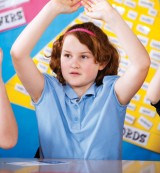 With Montessori an educational approach employed predominantly in the early years, one of the first questions that Stebbing’s wholesale adoption of it poses is ‘How does it work with older children?’. “There’s not a lot of difference between good teaching in state schools and good teaching in Montessori schools,” Karen begins when asked just that , “and in some senses you can view Montessori in KS2 as a synonym for child-led learning. With the older children it’s more of an ethos. It’s about being independent, responsible and children challenging themselves and not being satisfied with what they can do. They are constantly pushing for the next step. In practical terms, we have times during which children can select from a range of independent activities, and they have creative topics as homework, which are all done independently. They know what times tables chart they are on and they need to find their own time to practise these, to get themselves ready for their tests. The children all know where their areas of weakness are, so they know what to go back to and develop during independent learning times.”
With Montessori an educational approach employed predominantly in the early years, one of the first questions that Stebbing’s wholesale adoption of it poses is ‘How does it work with older children?’. “There’s not a lot of difference between good teaching in state schools and good teaching in Montessori schools,” Karen begins when asked just that , “and in some senses you can view Montessori in KS2 as a synonym for child-led learning. With the older children it’s more of an ethos. It’s about being independent, responsible and children challenging themselves and not being satisfied with what they can do. They are constantly pushing for the next step. In practical terms, we have times during which children can select from a range of independent activities, and they have creative topics as homework, which are all done independently. They know what times tables chart they are on and they need to find their own time to practise these, to get themselves ready for their tests. The children all know where their areas of weakness are, so they know what to go back to and develop during independent learning times.”
Whilst the workings of the early years Montessori classroom have by necessity been adapted to meet the needs of older children, other recognisable traits of the approach are very much in evidence. Step into any of Stebbing’s five classrooms, for instance, and you’ll notice that familiar Montessori materials and equipment are close to hand. “Montessori is most prominent in our maths lessons because the equipment is so useful,” Karen says. “For example, we have a big bead cabinet, with which children can learn about square roots, cube and squared numbers, multiplications,division, area and perimeter. It makes it so concrete and tangible for them, and when you’re trying to teach something so abstract it really does help. Afterwards, when it comes to applying it to more abstract problem-solving, they know what they’re doing. Rather than being bamboozled by the language, they can relate it back to how number really operates. We’ve looked at what we have to teach on the National Curriculum and have matched it with the equipment we have to support it.”
 Beyond the beads and blocks, there is also evidence of Stebbing’s Montessori core to be found in the way those at the school, children and adults alike, interact. There has been a conscious effort to develop a warm and welcoming environment in keeping with the Montessori goal of educating ‘the whole child’, and seeing classes in action it’s readily apparent that staff’s efforts have been successful. “I think the children feel very comfortable here,” Karen agrees. “We encourage a family atmosphere with reading partners, and reading ambassadors where the big kids go out and read to the little children. The dinner hall is split into age groups and the children all help each other. We have playground leaders and a buddy system, and all the children know each other’s names. My staff socialise quite a lot as well; we’re a very strong team.”
Beyond the beads and blocks, there is also evidence of Stebbing’s Montessori core to be found in the way those at the school, children and adults alike, interact. There has been a conscious effort to develop a warm and welcoming environment in keeping with the Montessori goal of educating ‘the whole child’, and seeing classes in action it’s readily apparent that staff’s efforts have been successful. “I think the children feel very comfortable here,” Karen agrees. “We encourage a family atmosphere with reading partners, and reading ambassadors where the big kids go out and read to the little children. The dinner hall is split into age groups and the children all help each other. We have playground leaders and a buddy system, and all the children know each other’s names. My staff socialise quite a lot as well; we’re a very strong team.”
Stebbing’s cause in this respect is helped by a number of other factors: its relatively small size, its five, split age-group classes comprising just 127 students in total; its longevity (there has been a school on the site since 1878, a fact to which its Victorian building testifies); its equivalent of a PTA, the AFSS (Associated Friends of Stebbing School), which is comprised of parents and members of the local community, many of whom are actively involved in school life; and its headteacher’s personal investment in the school. But the continuity of the Montessori approach itself – from on site nursery, Maynard Montessori (an ‘outstanding’ setting in its own right), to Reception and beyond – has played a major part in equipping children with the skills to participate successfully in such an environment too: “It’s definitely meant a smoother transition from early years to Y1,” Karen says. “The children are used to being calmer when they start at the school and to moving around the equipment and having specific areas to do things in; it’s something that they can continue as they move through the school.”
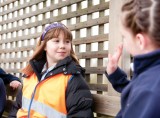 Which leaves the staff – just how daunting has it been to adapt to Montessori’s demands? “Taking on Montessori has meant a change in our way of working,” admits Karen. “It requires a lot of work before the lesson, for example – but then teachers feel like they’re doing less whilst it’s happening because they’ll be either observing, problem-solving, reinforcing or extending the children’s learning. Quite often you’ll walk into a classroom here and the children will all be busy and the teacher will be talking to one group. It doesn’t look as though they’re teaching, but the children are definitely learning – we’ve just moved away from the ‘standing up in front of the class and preaching at children’ approach.
Which leaves the staff – just how daunting has it been to adapt to Montessori’s demands? “Taking on Montessori has meant a change in our way of working,” admits Karen. “It requires a lot of work before the lesson, for example – but then teachers feel like they’re doing less whilst it’s happening because they’ll be either observing, problem-solving, reinforcing or extending the children’s learning. Quite often you’ll walk into a classroom here and the children will all be busy and the teacher will be talking to one group. It doesn’t look as though they’re teaching, but the children are definitely learning – we’ve just moved away from the ‘standing up in front of the class and preaching at children’ approach.
“Half of our staff were here as student teachers,” she adds, “so they’ve had time to become accustomed to this way of teaching. My Reception teacher has been teaching for over 20 years, but she has done her Montessori training now and is used to letting the children lead their own learning, so it’s not something that has caused us problems.”
Rather than a revolution, Stebbing Primary’s decision to take the Montessori route has been an evolution: a renewed commitment to independent learning and a pragmatic recognition of the value of tried and tested resources in classrooms across the Key Stages. That it has been a success is obvious from its ‘outstanding’ report, but even a short visit reveals a school that is confident in its chosen path and children who are benefiting daily from their teachers’ decision to take the plunge. Official Montessori accreditation might not be for every primary school, but it’s hard to argue that in Stebbing’s case it has paid huge dividends.
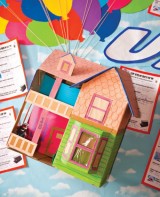 Whilst not a dominant feature of Stebbing’s curriculum, Mantle of the Expert is a noteworthy feature of learning at the school. “We find that ending a topic with it works well,” explains Karen. “It’s quite a good assessment tool. For example, for a recent topic on flight, a member of staff’s husband who is an airforce captain came in. The children had been working on a project to try and convince him to fly for their invented airline. They had to think about things like where they would fly to, how long it would take, how much it would cost, what planes they would use, what uniforms their crew would wear, what food they were going to serve – all the different aspects of running an airline. As well as the maths and the writing involved, the children had to analyse the task, assign different roles in their group, communicate, share and rehearse. It’s a great way of developing lots of different skills.”
Whilst not a dominant feature of Stebbing’s curriculum, Mantle of the Expert is a noteworthy feature of learning at the school. “We find that ending a topic with it works well,” explains Karen. “It’s quite a good assessment tool. For example, for a recent topic on flight, a member of staff’s husband who is an airforce captain came in. The children had been working on a project to try and convince him to fly for their invented airline. They had to think about things like where they would fly to, how long it would take, how much it would cost, what planes they would use, what uniforms their crew would wear, what food they were going to serve – all the different aspects of running an airline. As well as the maths and the writing involved, the children had to analyse the task, assign different roles in their group, communicate, share and rehearse. It’s a great way of developing lots of different skills.”
With space for only a relatively small number of children, Stebbing Primary’s split year group classes are a pragmatic choice, but they also forge closer ties between children of different ages, contributing to the feeling of togetherness across the school. Karen also sees the split classes as opportunities to challenge or build the confidence of children: “Children aren’t necessarily moved on their academic prowess, or age. There are always children who are more socially skilled than others; we have the opportunity to move them into a class where they can be challenged to extend their social skills, whilst nurturing those of their peers who will benefit from being the oldest and most mature in their class. It helps the more confident and skilled learn a little bit of humility and gives them something to aim for, and gives all the little ones who are just bubbling under the surface a chance to shine and grow in confidence.”
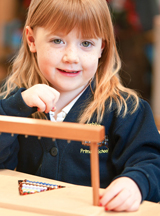 “I want enthusiasm and energy from a teacher,” says Karen. “I think all of our teachers are natural teachers, in other schools maybe they can say, ‘Right, it’s the third week of the second term, this is my plan’ – and it’s the same one that they taught the year before and the year before that. It’s all lovely and assessed and monitored, but if it’s not new to them I don’t see how they can get that enthusiastic and creative about it – and therefore how the children are going to get enthusiastic and creative about it. “That approach,” she adds, “suggests they’re assuming that they’re teaching the same children, which means they haven’t thought about how to teach the topic in a way that will best suit that particular group. They haven’t thought about what will hook them in. Doing that every day, for every topic takes energy and enthusiasm.”
“I want enthusiasm and energy from a teacher,” says Karen. “I think all of our teachers are natural teachers, in other schools maybe they can say, ‘Right, it’s the third week of the second term, this is my plan’ – and it’s the same one that they taught the year before and the year before that. It’s all lovely and assessed and monitored, but if it’s not new to them I don’t see how they can get that enthusiastic and creative about it – and therefore how the children are going to get enthusiastic and creative about it. “That approach,” she adds, “suggests they’re assuming that they’re teaching the same children, which means they haven’t thought about how to teach the topic in a way that will best suit that particular group. They haven’t thought about what will hook them in. Doing that every day, for every topic takes energy and enthusiasm.”
There’s no shortage of creative work going on at Stebbing, Teach Primary’s visit uncovering children discussing the relative measurements of hobbits, trolls and goblins, participating in a ukulele orchestra and creating art in a range of different mediums. Games-based learning was also under way in the form of crosscurricular topic centred on the venerable PC title Myst. “It’s been amazing,” says Y4/5 teacher, Jo Sparrow who was inspired by a conference appearance by Tim Rylands. “It’s about a journey really, rather than a gaming experience – so, as we’re working on descriptive language, we’ve been stopping at different points and the children have been writing about what they’ve seen. Their work has gone from a couple of sentences to pages and pages. I’ve been standing here and the words that they’ve been coming out with have literally had me in goose-bumps, and it’s because they feel so involved.”
How children react to a moral dilemma may be down to your teaching
Ace-Classroom-Support
Behaviour management: choosing the right words
Behaviour Management
